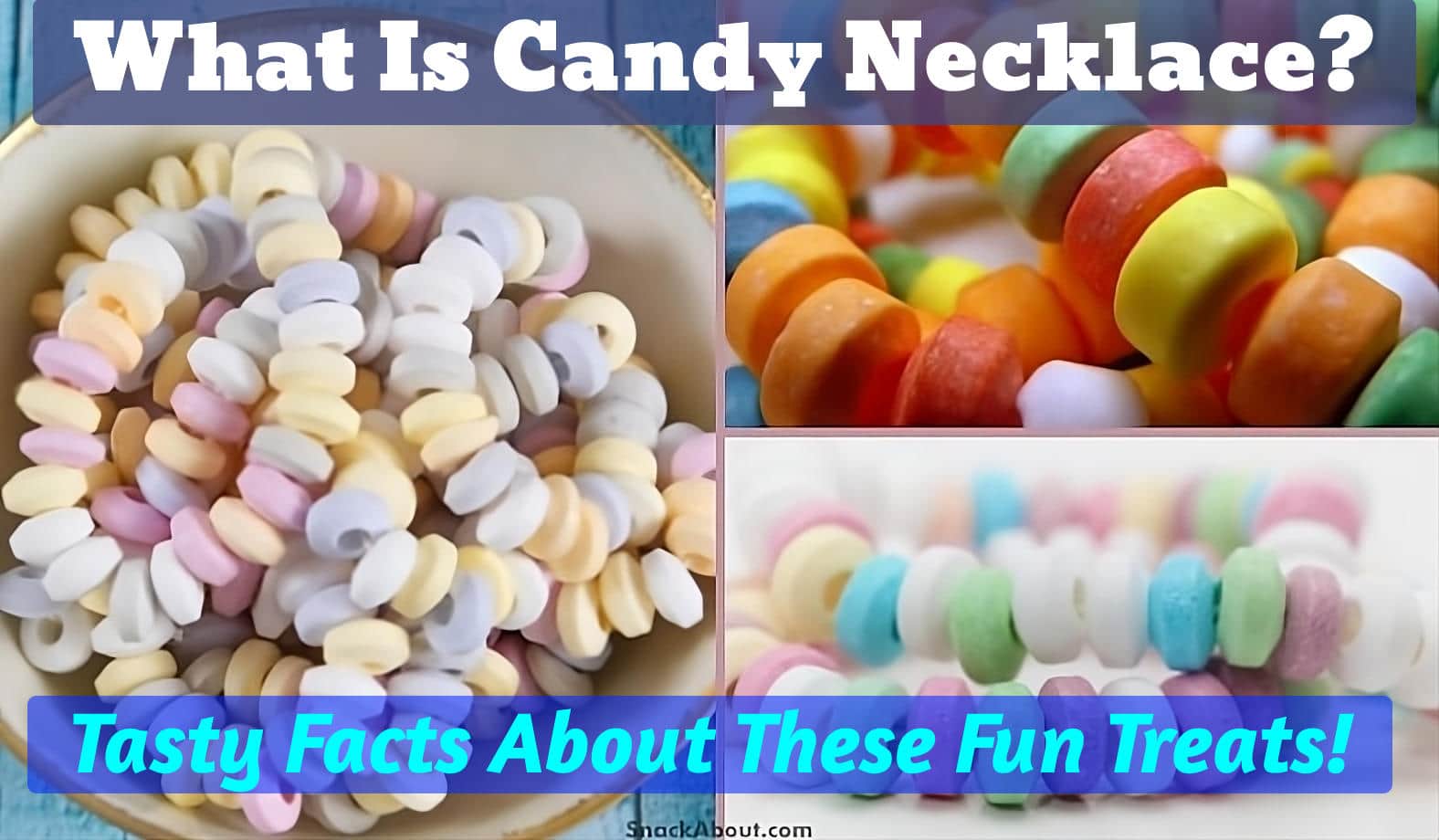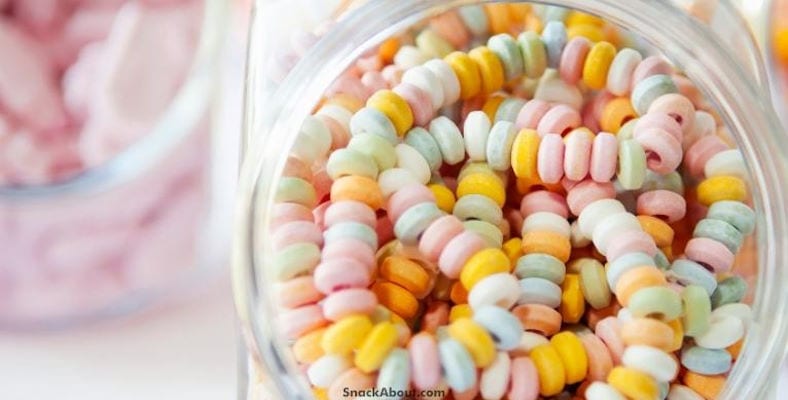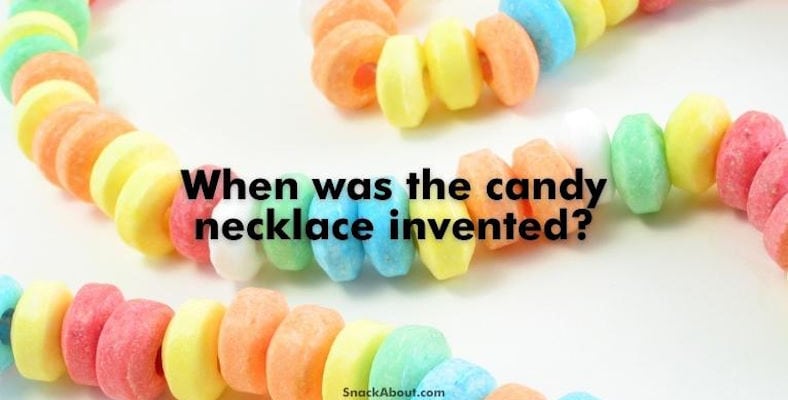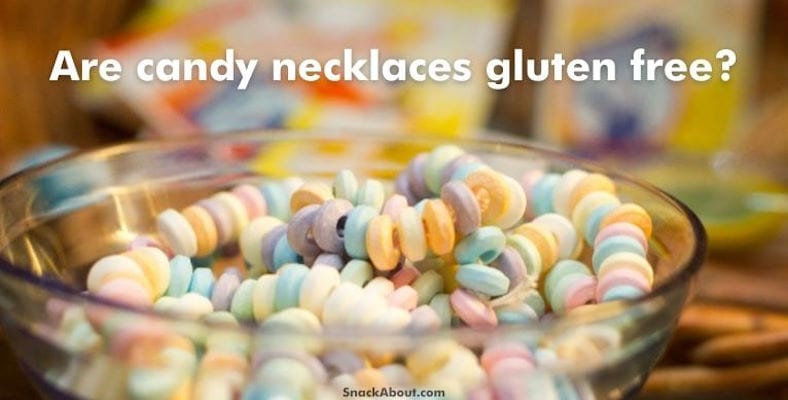Contents
What Is A Candy Necklace?
First things first: there are actually two kinds of candy necklaces:
- One is a handmade (or pre-made) traditional sweet chain of bite-sized desserts that are strung together into the shape of a necklace.
- The other type is a fun edible necklace you can wear that’s made of similar multi-colored candies with a hole in the center in which a stretchable string is looped through, creating a necklace.. The candies usually have a texture and taste very similar to Smarties candies or other small bite-size candies of that type.
Candy necklaces are usually made with dry or rock candy to avoid melting on the wearer’s skin or clothes if they’re not eaten immediately.
(Note that I’ll call the pre-made type with hard candies a “strung” necklace below to avoid confusion.)
Store Bought Candy Necklaces
In general terms, stores sell candy necklaces made from various types of sweets, such as hard candy, sour patches, gumdrops, and peppermints. Candy necklaces in candy shops or machines are also sometimes made of stretchy sweets to steer kids from choking risks.
What Ingredients Are in Candy Necklaces?
Storebought strung candy necklaces contain the basic ingredients you’ll find in any similar processed candy such as glucose syrup, dextrose, sugar, citric acid, magnesium stearate, maltodextrin, and artificial flavor. You may notice right away that several of the ingredients are the same as what you’ll find in Sweet Tarts for example – and they look, taste, and even crunch similarly, too!
Additionally, artificial coloring is commonly used to make it a bit more exciting for kids with all the colors on the spectrum. In some cases, natural fruit flavoring is used as well, but that’s less common.
Homemade Candy Necklaces
Homemade candy necklaces typically need to be eaten faster since they’re not as processed. But you can still have plenty of fun making them for your kids.
You’ll need a string or ribbon, preferably another type of candy like sour straws, Nerds Rope, or licorice.
As for the necklace itself, you can use a simple O-shaped candy like Life Savers, Cheerios, Peach O’s, or whatever your kids like! And if you’re willing to do some extra work, you can pierce large mushrooms or gummy bears and use them.
When Was the Candy Necklace Invented?
Processed foods, including candy, experienced a massive boom after World War II. However, with candy necklaces, it’s a bit unclear when and where exactly it came out.
Some say that candy necklaces first appeared in Europe years before their American debut but the current consensus is that they first appeared in America in 1958.
What Are Candy Bracelets Made Of?
Strung candy bracelets are like the miniature version of candy necklaces so their ingredients are the same as the strung necklaces I listed above.
A DIY-style or “larger” candy bracelet is typically made of chewy sweets strung in an edible candy rope. But instead of being large enough to fit around the neck, they’re made for the wrists. The ingredients in that case will depend on type of candy is used to make it.
Are Candy Necklaces Gluten-Free?
Yes, the most popular candy necklaces like old-fashioned strung necklaces contain gluten-free ingredients so you shouldn’t have issues with them.
However, if you opt for a less-known brand, check the ingredients label first to be sure. As a general rule, however, they’re almost always gluten-free.
How Do You Eat a Candy Necklace?
That’s entirely up to you! You can wear it and nibble away until there’s nothing left. Or you can take it off, cut the string and remove the pieces, and then eat them one at a time like little candy bits just like Pez for example.
It’s all up to you, and that’s what we love about candy necklaces.
Can You Eat the String in a Candy Necklace?
That depends on the brand, but generally no, the string is normally not edible. Most use a stretchy type of fabric for string while others may use food-grade items.






